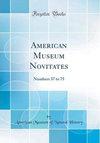哥伦比亚北部一新种Trigonisca的巢结构、幼期及民族昆虫学(膜翅目:蜂科)
IF 1.1
3区 环境科学与生态学
Q3 BIODIVERSITY CONSERVATION
引用次数: 8
摘要
无刺蜂(Apinae: Corbiculata: Meliponini)是世界热带和亚热带地区重要的传粉昆虫。然而,大多数物种的信息有限。本文报道了一新种Trigonisca Moure的生物学和系统资料,该新种来自哥伦比亚的La Guajira干旱地区。该属是独特的Trigonisca属群的一部分,值得注意的是,它是新热带无刺蜜蜂最早的分支。本文对Trigonisca属群进行了简要的诊断,并提供了Trigonisca属群属和亚属的分类钥匙,以及Exochotrigona Engel新亚属的描述。我们还概述了发生在哥伦比亚的物种,并提出了Trigonisca (Trigonisca) mepecheu Engel和Gonzalez的新物种描述,包括所有三个种姓的描述。一个单独的、保存不好的鸡蛋值得注意,因为它的体积极小。它的绒毛膜被一种凸起的几何图形的表面图案广泛覆盖,这似乎是Meliponini的特征。健壮的成熟幼虫,虽然非常小,但在身体背部表面上有广泛的刺状突起,大多数身体部位都有小的、成对的背外侧结节。此外,唇端显示了一个最近发现的多刺状针状体的尖端斑块,混合着各种感觉器官。这些未成熟阶段的形态特征,在已知的地方,与以前报道的其他Meliponini相似。我们记录了T. mepecheu巢穴的内部结构,这些巢穴是我们在鹰嘴蜥(Haw.)的树干中发现的。Buxb。(仙人掌科)和更常见的Libidibia coriaria (Jacq.)Schltdl。(豆科),以及瓜希拉岛唯一的另一种无刺蜜蜂Melipona favosa (fabicius)的巢穴。在人造建筑的侧面也发现了巢穴。当地的Wayúu收获无刺蜜蜂的蜂蜜,在Wayuunaiki语中,这两个物种在该地区有特定的名字,尽管显然有一种口头传统认为T. mepecheu的蜂蜜会导致失明。来自哥伦比亚copal的Trigonisca (Trigonisca) melaiae Penney是T. (T.) schulthessi (Friese)的新初级同义词。本文章由计算机程序翻译,如有差异,请以英文原文为准。
Nest Architecture, Immature Stages, and Ethnoentomology of a New Species of Trigonisca from Northern Colombia (Hymenoptera: Apidae)
ABSTRACT Stingless bees (Apinae: Corbiculata: Meliponini) are biologically and culturally important pollinators within the tropical and subtropical areas of the world. However, limited information is available for the majority of the species. Biological and systematic data are presented for a new species of Trigonisca Moure, from the arid region of La Guajira, Colombia. The genus is part of the distinctive Trigonisca genus group, noteworthy for its position as the earliest diverging extant lineage of neotropical stingless bees. We briefly diagnose the genus group and provide a key to the genera and subgenera of the Trigonisca genus group, along with the description of Exochotrigona Engel, new subgenus. We also outline the species occurring in Colombia and present a description for Trigonisca (Trigonisca) mepecheu Engel and Gonzalez, new species, including accounts of all three castes. A single, poorly preserved egg is noteworthy because of its extremely small size. Its chorion is extensively covered by a surface pattern of elevated geometric figures, as seems to be characteristic of the Meliponini. The robust mature larva, though remarkably small, exhibits extensive spiculation of dorsal body surfaces and most body segments with small, paired dorsolateral tubercles. In addition, the labral apex exhibits an apical patch of recently discovered multipronged spicules intermixed with various sensory sensilla. These morphological features of immature stages, where known, are similar to those previously reported for other Meliponini. We document the internal architecture of nests of T. mepecheu, which we found in trunks of Stenocereus griseus (Haw.) Buxb. (Cactaceae) and more commonly in Libidibia coriaria (Jacq.) Schltdl. (Fabaceae), along with nests of the only other stingless bee from La Guajira, Melipona favosa (Fabricius). Nests were also found in the sides of manufactured structures. The indigenous Wayúu harvest stingless-bee honey and have specific names in Wayuunaiki for the two species occurring in the region, although there is apparently an oral tradition in which the honey of T. mepecheu causes blindness. Trigonisca (Trigonisca) ameliae Penney from Colombian copal is a new junior synonym of T. (T.) schulthessi (Friese).
求助全文
通过发布文献求助,成功后即可免费获取论文全文。
去求助
来源期刊

American Museum Novitates
环境科学-动物学
CiteScore
3.00
自引率
6.70%
发文量
8
审稿时长
>36 weeks
期刊介绍:
The Novitates (Latin for "new acquaintances"), published continuously and numbered consecutively since 1921, are short papers that contain descriptions of new forms and reports in zoology, paleontology, and geology.
 求助内容:
求助内容: 应助结果提醒方式:
应助结果提醒方式:


